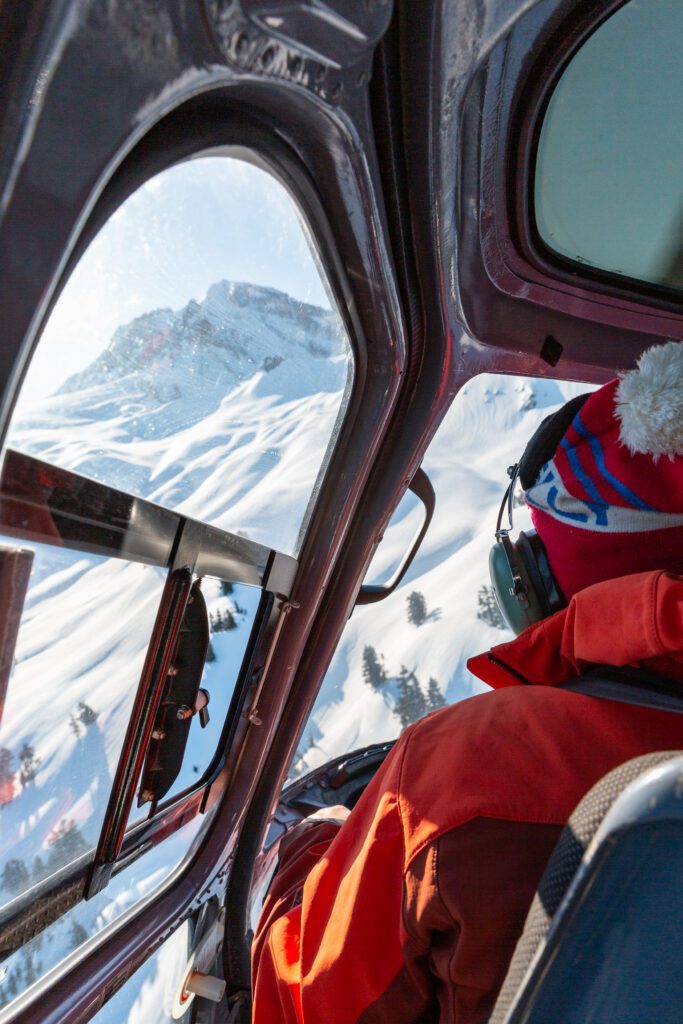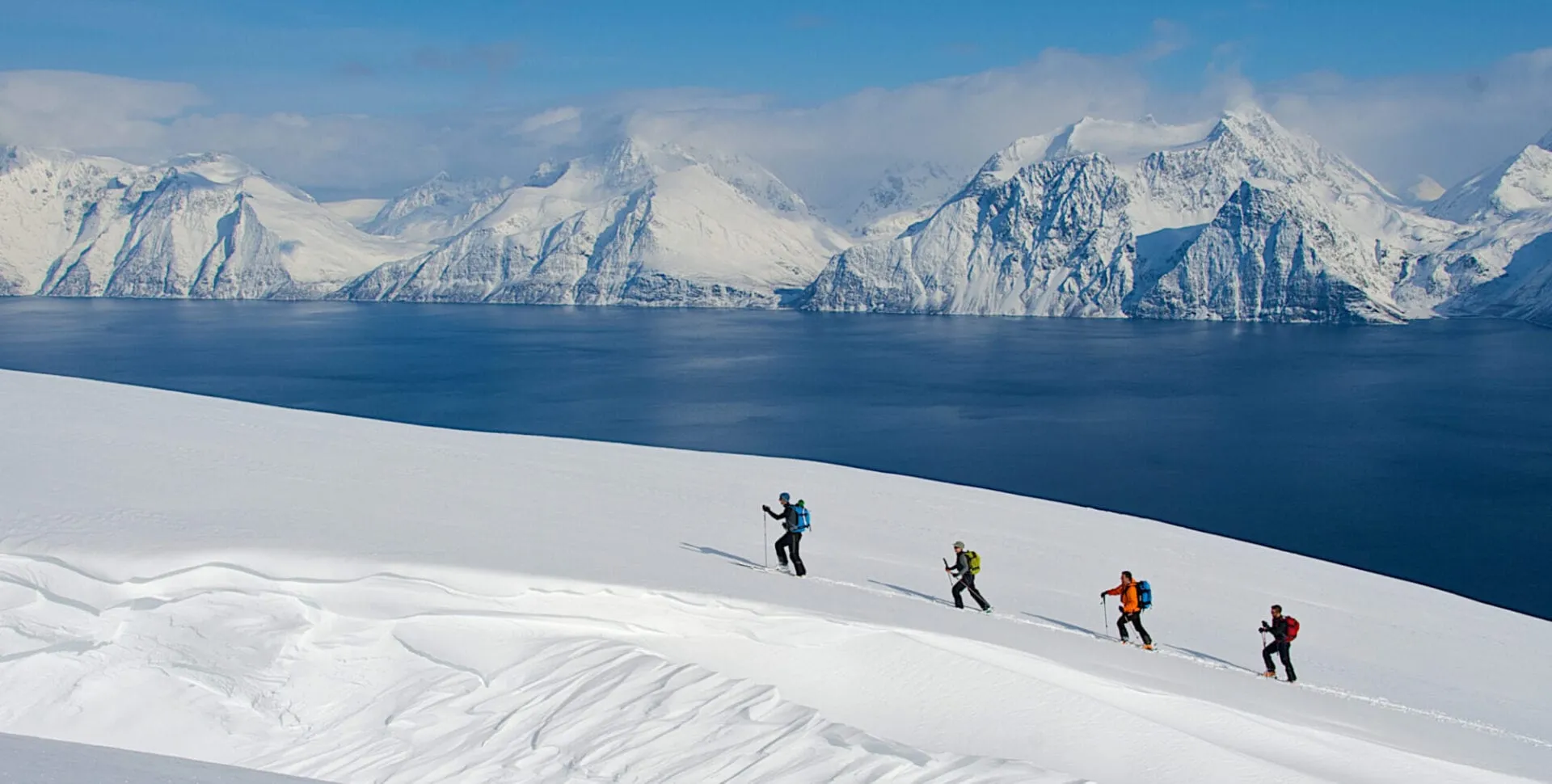Pre-Trip Planning for The Dolomites
Everything you need to know before embarking on your hut-to-hut ski trip in the Dolomites
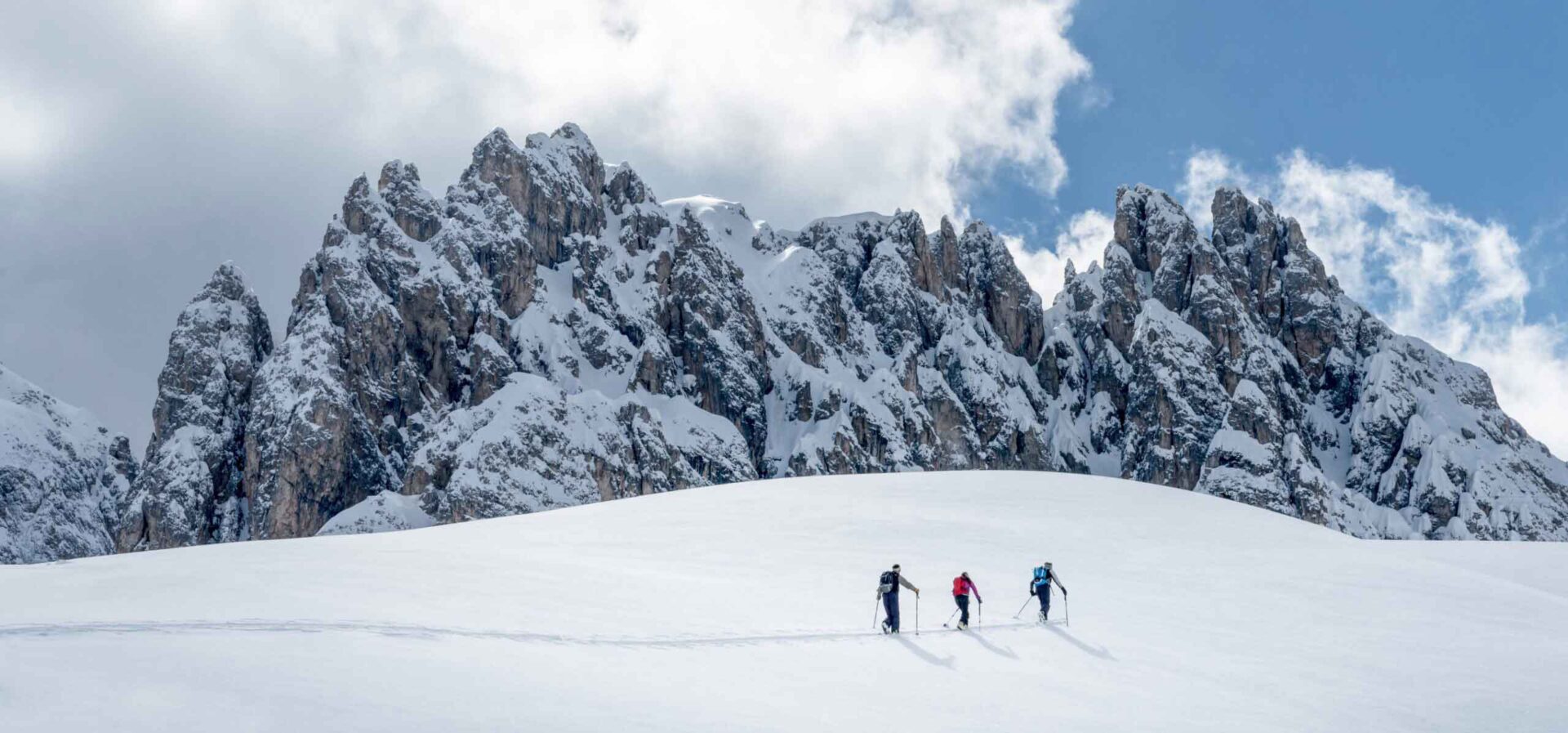
With your Dolomites ski touring adventure drawing near, you may be wondering if you have all the necessary items and information. We have compiled a comprehensive guide to help you prepare you for a smooth and hassle-free trip:
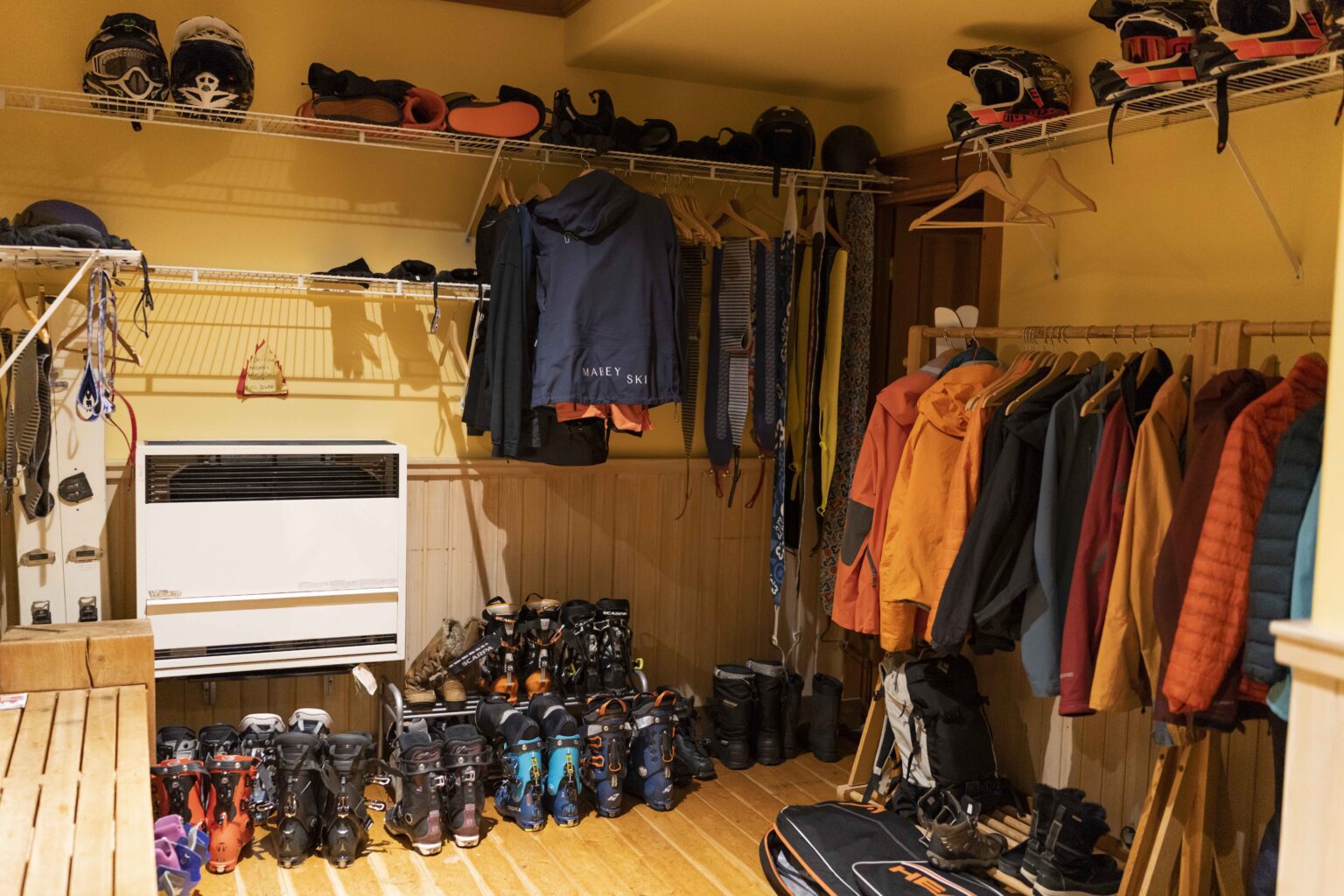
Ski Touring Packing List
Here’s our suggested packing list to help ensure that you have everything you need for a safe, comfortable, and enjoyable ski trip in the Dolomites.
Ski / Snowboard Gear
- Touring skis or splitboard
- Skins for skis or splitboard
- Adjustable poles (telescopic poles required for splitboarders)
- Touring ski boots or snowboard boots
- Daypack for ski touring (recommend 30L)
- Avalanche safety kit; shovel, probe and transceiver (also available to rent)
- Sunglasses and sunscreen
- Goggles and helmet
- Water bottle or hydration pack
- Boot crampons (depending on snow conditions)
- Ski crampons (depending on snow conditions)
- Ice axe (extreme ski touring trips only)
Ski / Snowboard Clothing
- Weatherproof shell jacket and pants
- Warm down or synthetic “puffy” insulated jacket and/or other mid-layers
- Thermal base layers (top and bottom)
- Ski/snowboard socks
- Weatherproof ski gloves
- Glove liners for uphill (mountain biking/running gloves work well)
- Warm hat/toque and balaclava/neck gaiter
- Baseball cap or sun hat
- Winter boots for walking around in the snow
Extras
- Small thermos and or mug
- Multi-tool and gaffer/duct tape
- First aid kit and blister kit
- Snacks
- Headlamp with fresh batteries
Looking to purchase some new gear? Check out Mabey Ski’s Ultimate Ski Touring Gear Guide.
Language and Etiquette
While many locals in the Dolomites speak Italian, German is also widely spoken in the region. Some menus and signage may be in German rather than Italian, so it can be helpful to brush up on a few basic German phrases before you go.
Italian Words and Phrases
- Buongiorno – Good morning
- Buonasera – Good evening
- Ciao – Hi/Bye
- Grazie – Thank you
- Prego – You’re welcome/Please
- Per favore – Please
- Mi scusi – Excuse me/Sorry
- Non capisco – I don’t understand
- Parla inglese? – Do you speak English?
- Quanto costa? – How much does it cost?
- Vorrei… – I would like…
- Mi porti il conto, per favore? – Can you bring me the bill, please?
- Salute! – Cheers!
- Arrivederci – Goodbye
German Words and Phrases
- Sprechen Sie Englisch? – Do you speak English?
- Ich spreche kein Deutsch – I don’t speak German
- Bitte – Please
- Danke – Thank you
- Bitteschön – You’re welcome
- Entschuldigung – Excuse me/sorry
- Das Menu? – Do you have a menu?
- Ist die Küche geöffnet? – Is the kitchen open?
- Wo ist die Badezimmer? – Where is the bathroom?
- Wieviel kostet das? – How much does this cost?
Tipping in Italy
In Italy, tipping is not as common as it is in some other countries, as service charges are often included in the bill. However, it is still appreciated to leave a small tip for exceptional service. A common practice is to leave a few coins on the table, or round up the total amount to the nearest Euro. In restaurants, it is not necessary to tip the waiter or waitress, but if you do decide to leave a tip, it should be a maximum of 10% of the total bill. It is also not customary to tip taxi drivers, but rounding up the fare to the nearest Euro is appreciated. In hotels, it is common to leave a small amount for the housekeeping staff, usually a few Euros per day. Overall, tipping in Italy is not expected, but a small gesture of appreciation for good service is always welcome.
Currency
It is useful to have a combination of cash (Euros) and credit/debit cards as a suitable payment method when travelling in Italy. While ATMs are the most convenient way to withdraw money, it is not advisable to solely rely on them, especially if you are staying in rifugios. Although credit cards are widely accepted in most places in Italy, such as supermarkets, shops, and restaurants, some small businesses and rifugios may not have credit card facilities. Therefore, it is recommended to carry enough cash when travelling from hut to hut.
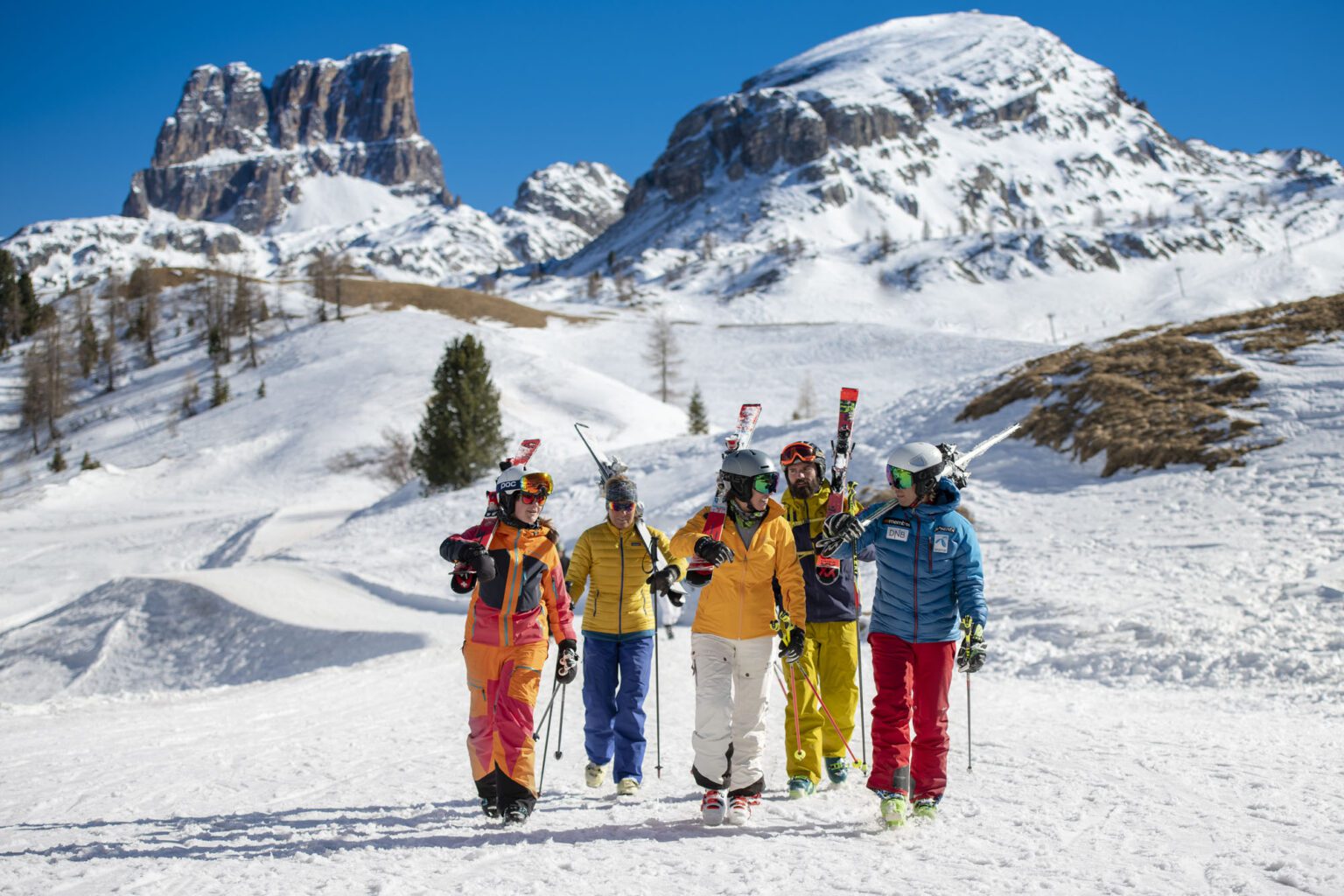
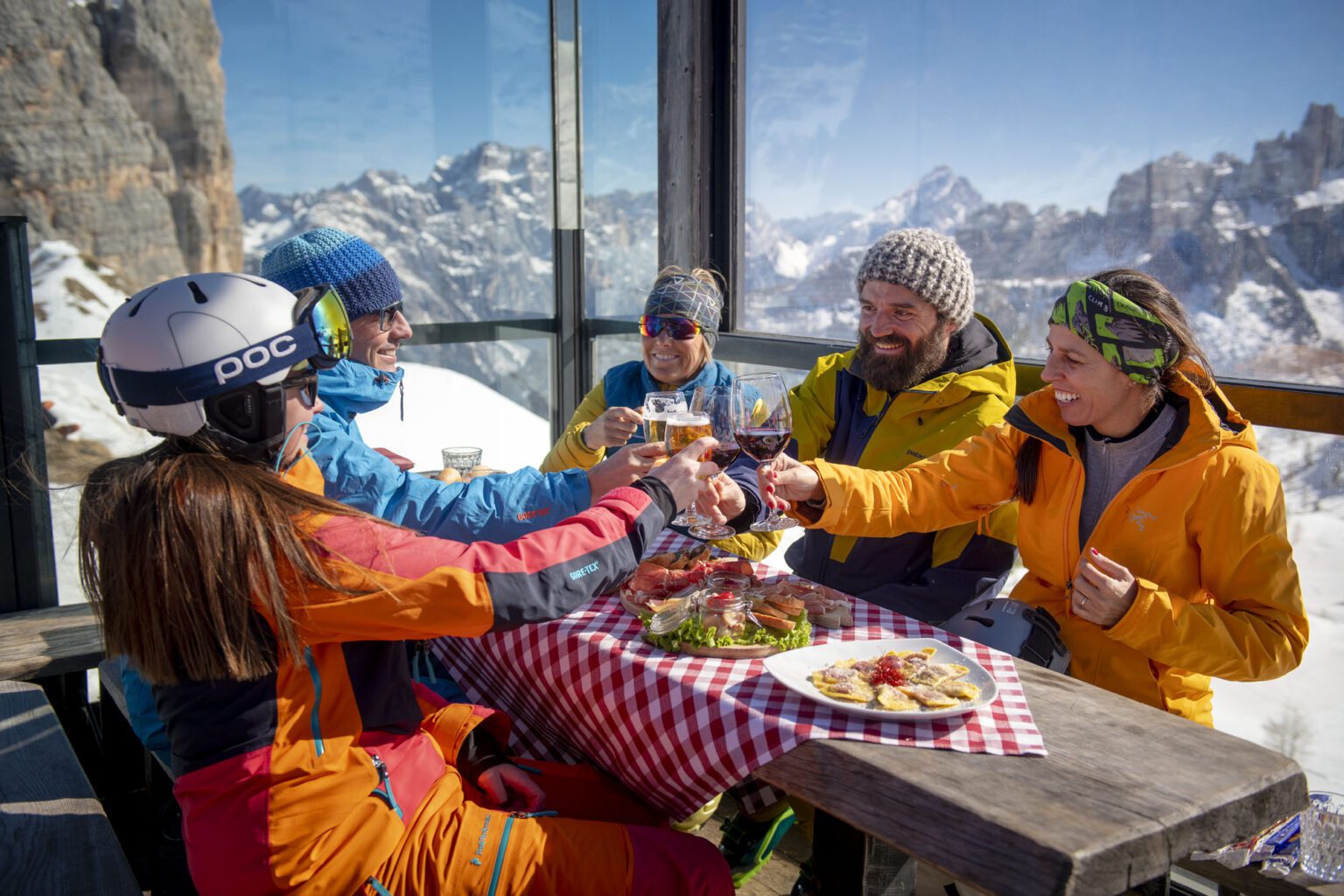
Local Cuisine
Italian cuisine is famous worldwide for its diversity, simplicity, and use of fresh, high-quality ingredients. It is a blend of various regional traditions, each with its unique specialties, flavours, and cooking techniques. Some of the most iconic dishes of Italian cuisine include pizza, pasta, risotto, lasagne, and gelato. Italian cuisine is also known for its focus on simplicity and letting the natural flavours of the ingredients shine through. Olive oil, tomatoes, garlic, and herbs such as basil, oregano, and rosemary are staples of Italian cooking. Italian cuisine is often accompanied by wine, which is also an essential part of the country’s gastronomic heritage.
Dining in the Dolomites
The food in the Dolomite Mountains is distinct from other Italian cuisines due to the region’s unique geography and cultural history. The mountainous terrain and cold climate have influenced a range of hearty and warming dishes that are ideal for fueling active lifestyles. The region’s traditional ingredients, such as speck, cheese, and mushrooms, are highly valued and often featured prominently in local recipes. The Dolomite Mountains were also historically part of the Austrian and German empires, and this cultural influence is reflected in the local cuisine. Many traditional dishes have German or Austrian names, and there are also a number of sweet treats that are popular in the region.
If you’re planning to dine in the Dolomite Mountains you may wish to take note of the following:
Hours of operation
Many restaurants in the Dolomites are family-run businesses, and their hours can vary depending on the season and the day of the week. It’s a good idea to check ahead and make sure that the restaurant you want to visit will be open when you plan to be there.
Dress code
Dress codes can vary depending on the restaurant, but generally speaking, the attire is casual. In ski resort areas, you will often see people dining in their ski gear.
Reservations
Reservations are recommended for popular restaurants, especially during peak season. It’s always a good idea to call ahead to ensure that you can secure a table.
Getting To The Dolomites
The Dolomites, located in northern Italy, offer breathtaking scenery and world-class outdoor activities such as skiing and hiking. If you’re planning a trip to the Dolomites, there are several transportation options available to get you from the airport to your destination.
Private Taxis
Private taxis are available from most major airports, but it is recommended to book in advance. Depending on your arrival airport and destination, a private car can cost approximately €300-400 each way.
Car Hire
Rental cars are available at all major international airports. However, if your trip does not begin and end at the same location within the Dolomites, you will also need to make arrangements to park and return to your car at the end of your trip. Due to the lack of drop-off points, it’s recommended to keep the car until the end of your trip. In Cortina, you can drop off your car if rented through Autovia (available at Venice Airport).
Train
Trains operate regularly between Venice to Bozen/Bolzano in the Dolomites. You can also travel by train from Milan, Verona, and Innsbruck.
Bus
There are several bus companies operating from the main cities to the Dolomites. To/from Cortina, you can take the following buses:
Cortina Express: Daily services from Venice Airport & Venice Mestre train station to Cortina. Daily services from Cortina to Alta Badia (from July to September). Tickets can be purchased online, on board of the coach, or at the Cortina Express ticket counter located at Venice airport & Cortina bus station.
ATVO: Daily services from Venice Airport & Venice Mestre train station to Cortina. Advance reservation mandatory, tickets can be purchased online or at the ATVO ticket counter located at Venice airport.
Flixbus: Daily services from Venice Airport & Venice Mestre train station to Cortina. Online reservation required.
To / from Alta Badia
From Venice: First, you need to get to Cortina as explained above.
Prior to 25 December there are no buses connecting Cortina with Alta Badia, the only option is to get a taxi from Cortina (ask for details). From 26 December to the end of March the Cortina Express operates daily services from Cortina to Alta Badia, calling at San Cassiano, La Villa, Corvara, and Colfosco. From April onwards there are no buses connecting Cortina with Alta Badia, the only option is to get a taxi from Cortina (ask for details).
To / from Val Gardena
Flixbus offers services from Milan, Bergamo, Verona, Venice, Innsbruck, and Monaco to Bolzano. From Bolzano, there are hourly services to Val Gardena; bus 350 or bus 170 from Bolzano train station to Val Gardena.
Local Tips
The most common gear transmission in Italy is manual. You can also find automatic cars but you may need to book ahead. Advance reservations are also recommended for private taxis and ATVO buses. Tickets for Cortina Express can be purchased online, on board of the coach.
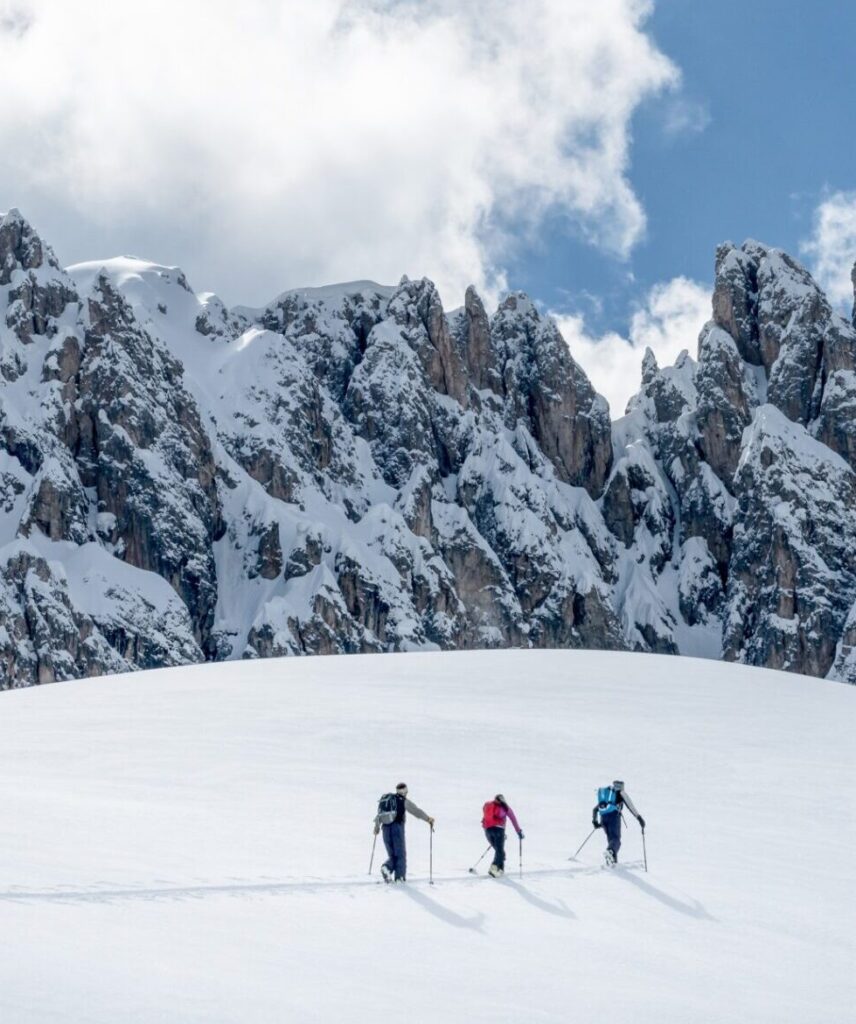
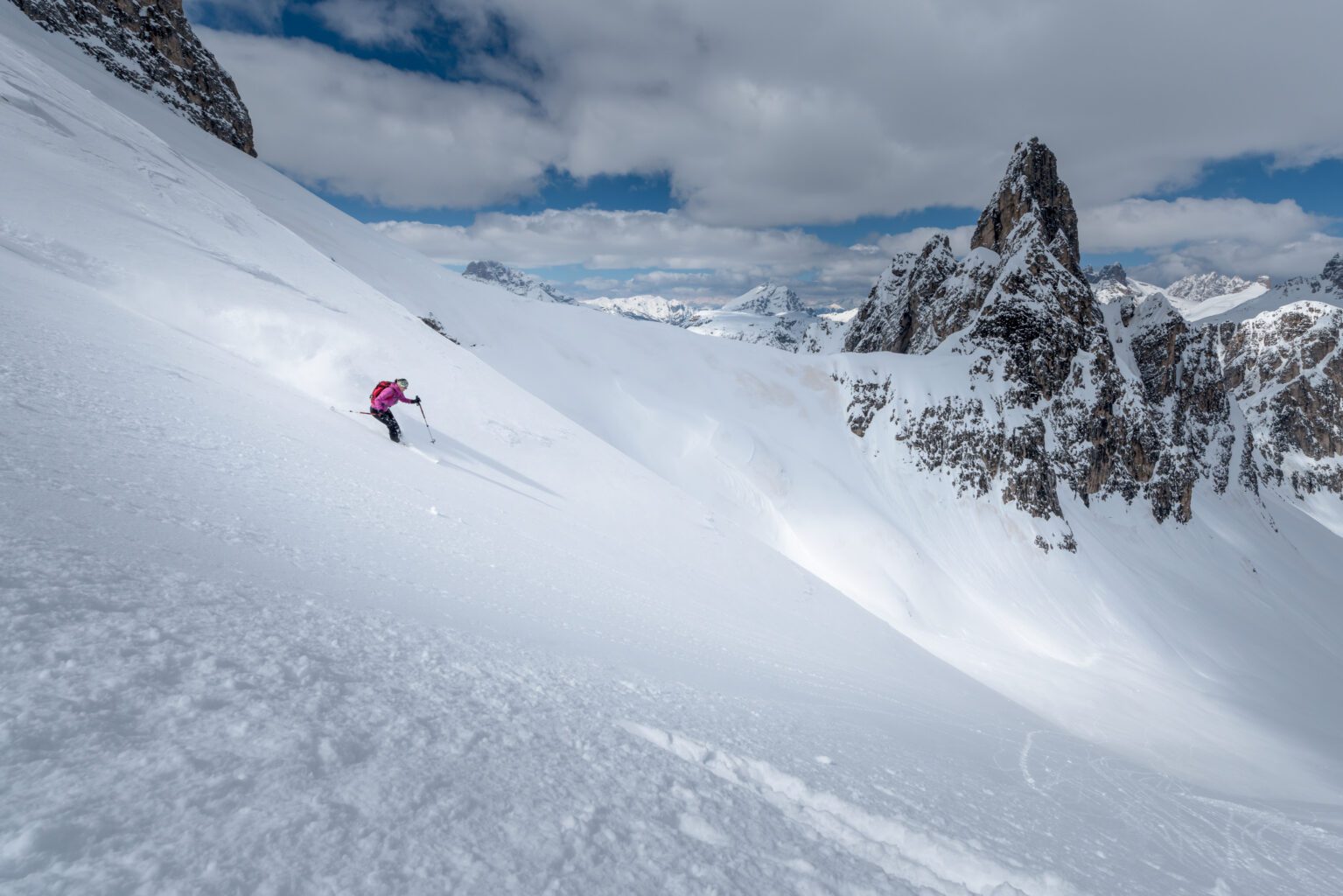
Safety
If you need emergency medical assistance during your trip dial 112 and ask for an ambulance. You should contact your insurance company immediately if you are referred to a medical facility for treatment.
Snow And Weather Conditions
Safety is our first priority and if a guide decides it is unsafe for any reason, they will turn around or slow the tour down. Please be aware that bad weather or dangerous conditions may lead to the decision to change the location of the tour for both guide and participant safety. It is imperative that participants listen to the guide. Please note that access to any summits require clear weather conditions. Should the weather change we may have to change the itinerary slightly by switching days to make sure you get the best visibility and snow conditions throughout your trip.
How Cold Will It Be?
Average low temperatures range from -6°C to -1°C in December and January. The high altitude of the mountains means that temperatures can drop even lower in some areas. In February and March, temperatures can start to rise slightly, with average lows ranging from -5°C to 0°C. Check out our Packing List above to stay warm.
Will I Get Altitude Sickness?
The Dolomites are known for their high peaks, at heights of 3,343 m. The effects of altitude sickness can vary from person to person and depend on factors such as altitude, rate of ascent, and individual susceptibility. Symptoms may include headache, nausea, fatigue, dizziness, and difficulty sleeping. To minimise the risk of altitude sickness, it is recommended to ascend gradually, stay hydrated, and avoid alcohol and smoking. If you feel any affects of altitude sickness, please inform your guide as soon as possible.
Travel Insurance
Mabey Ski recommends Global Rescue to provide evacuation and advisory services to our clients when traveling. We strongly suggest purchasing a travel membership anytime you are more than 100 miles from home. Both short-term as well as annual memberships are available. Please use this link or call Global Rescue directly and mention you are traveling with Mabey Ski. There are no restrictions on activities with Global Rescue memberships.
It is important to note that Global Rescue is a membership organization and not an insurance company. While Global Rescue provides the industry’s best evacuation and advisory services for complete protection while traveling, a membership should be combined with a travel insurance policy. Click here to get a quote for a combined plan.
Global Rescue also offers IMG Signature Travel InsuranceSM, which is a great option to protect you from financial loss due to trip cancellation, trip interruption, emergency medical care, lost luggage, etc. Trekking, climbing, biking, and off-piste skiing are covered by this insurance. To purchase a Signature Travel Insurance policy, please click here.
